This low histamine tea with Asian pears, also known as apple pears or Korean pears, which are widely available here every fall. It calls for just 2 ingredients, with a bit of ginger if you like your tea with a bite!
For another delicious pear recipe, try my whole roasted pears for a simple treat!
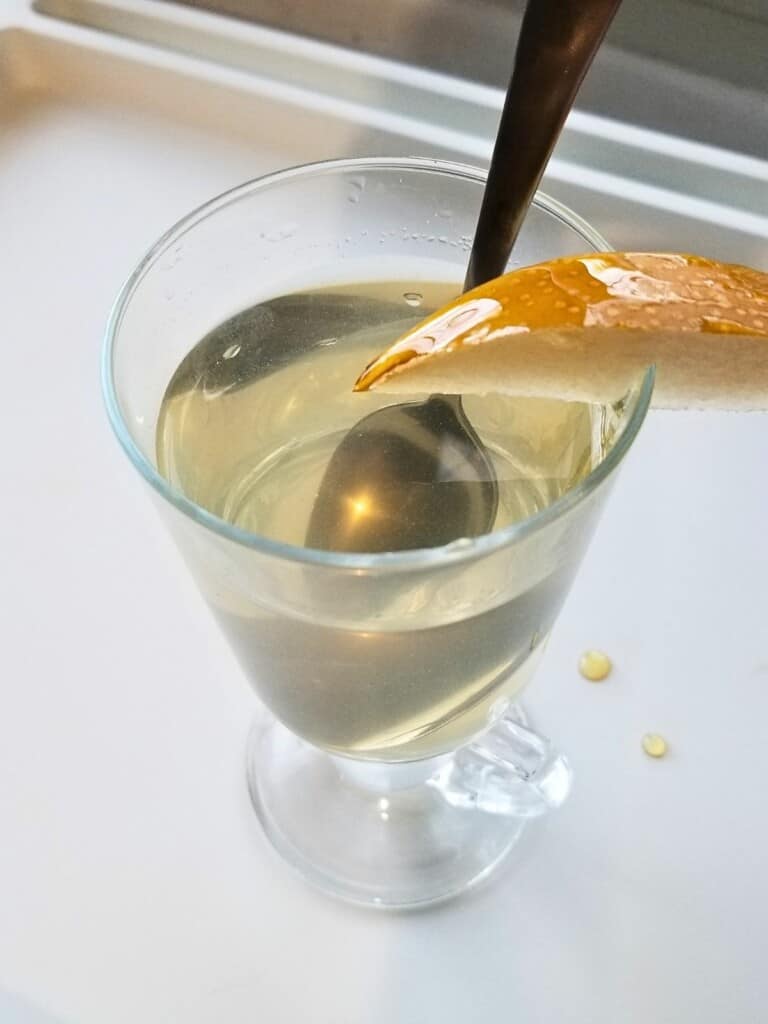
Jump To
About this recipe
Accidental Win. I was inspired to try this delicious experiment after realizing I had nothing to do with the peels from my favorite fall treat: the Asian pear. Every couple weeks when I was a kid, we picked up a box of these from our local H-Mart (Korean grocery store), as soon as they came in season. I didn't even try a 'typical' American pear until I was a teenager!
Low Histamine Tea. Much like most of the other low histamine teas shared on this site, this is made from real food rather than tea leaves, making it safe for almost all diets.
No Mess, No Waste! This is a great way to use up pear peels instead of tossing them (though feel free to eat them afterwards).
Ingredients
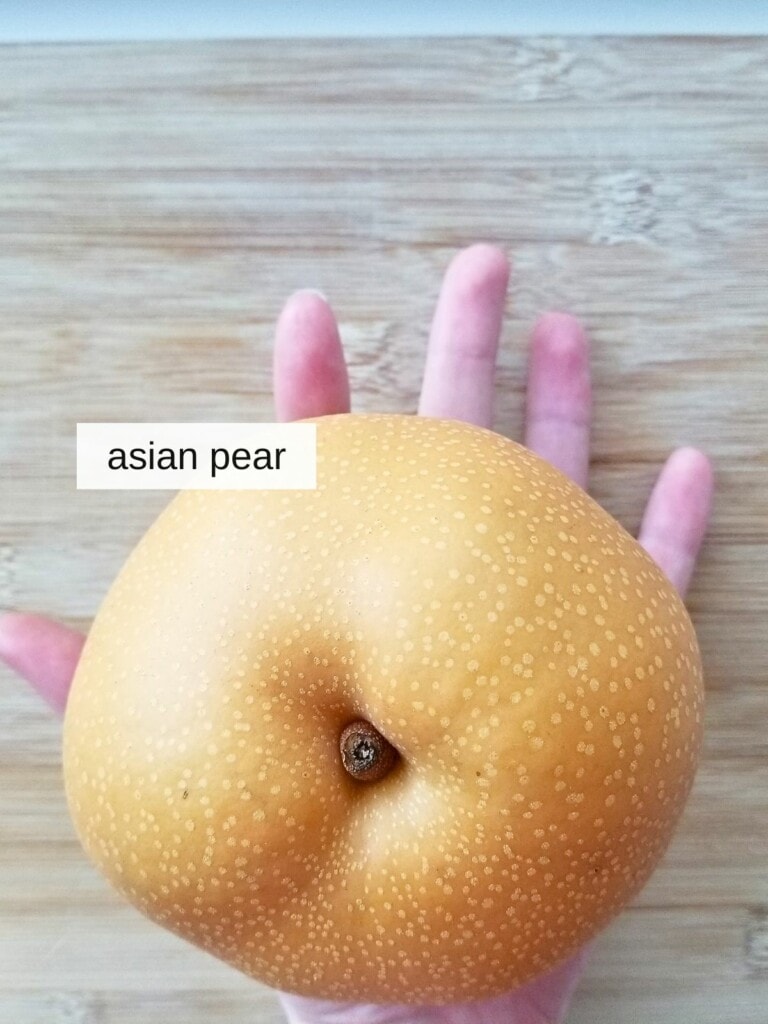
Asian Pear Peels: one of my favorite types of pears, you can use some of the flesh for this tea, but th epeels are the real treat.
Honey: there are a multitude of low histamine sweeteners you can use in tea, but by far my favorite is manuka honey. Not only is it great for the digestive system, but manuka honey has been proven to lessen allergy symptoms, like those of histamine intolerance.
Fresh Ginger: possibly the best-known low histamine spice, ginger is the sharp, mildly sweet root of a flower; it’s been used for thousands of years in dishes both sweet and savory.
How to make asian pear tea: step-by-step instructions
Step 1. Carefully wash your Asian pear; for tea you'll be using the peels, so it's especially important that it's clean. Then cut the pear in half and into slices, if needed, and then peel half the pear (or both halves for 2 servings).
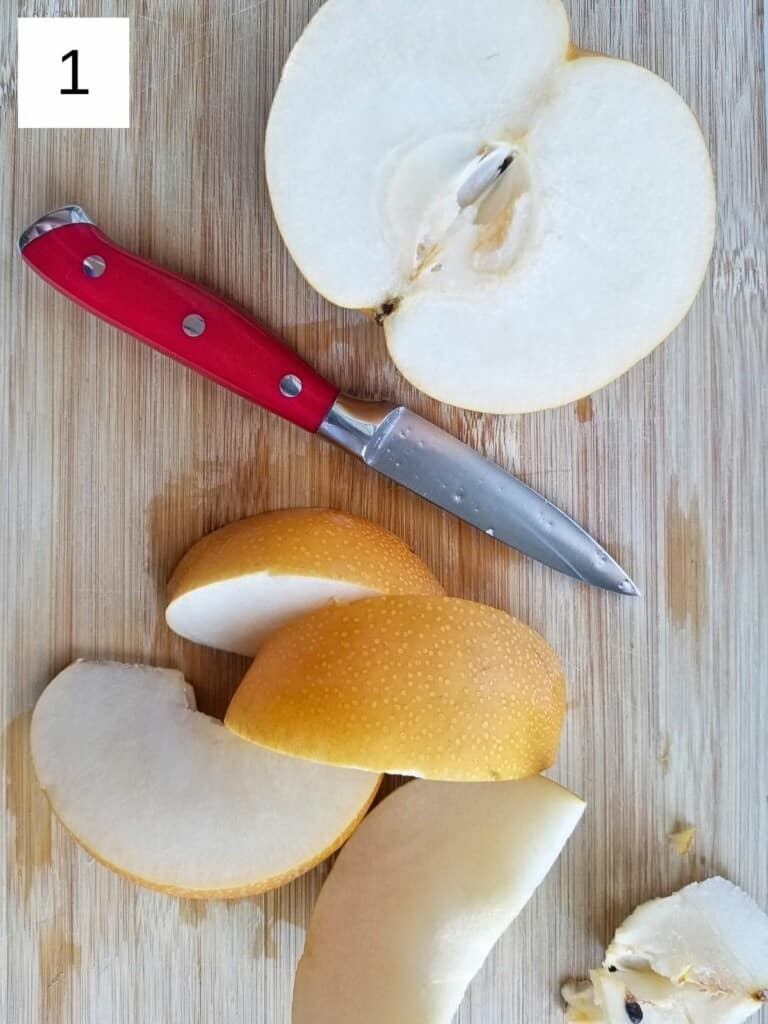
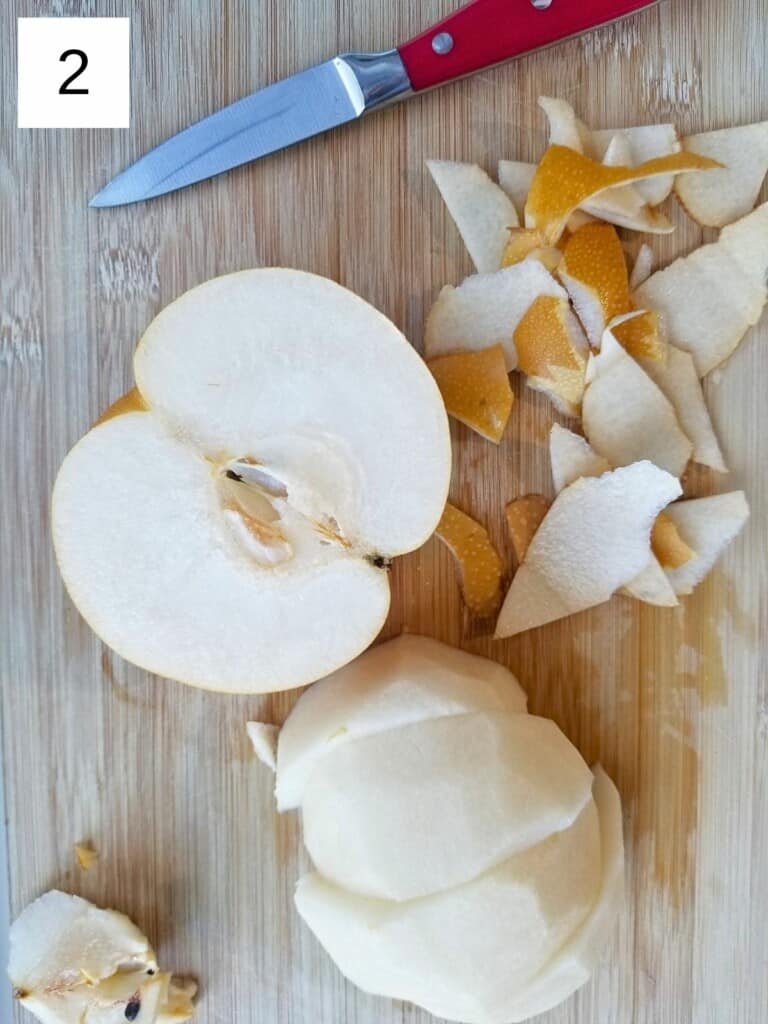
Step 2. Put the peels and just over one cup of water into your pot, and then turn on medium heat (or just medium-low, if using a large burner and a small pot). Heat the peels for about 5-7 minutes, lowering the heat if you start to notice it boiling rather than simmering.
Pro-Tip: This is also when you may want to add a thin slice of fresh ginger or a dash of ginger powder for that little bite of spice.
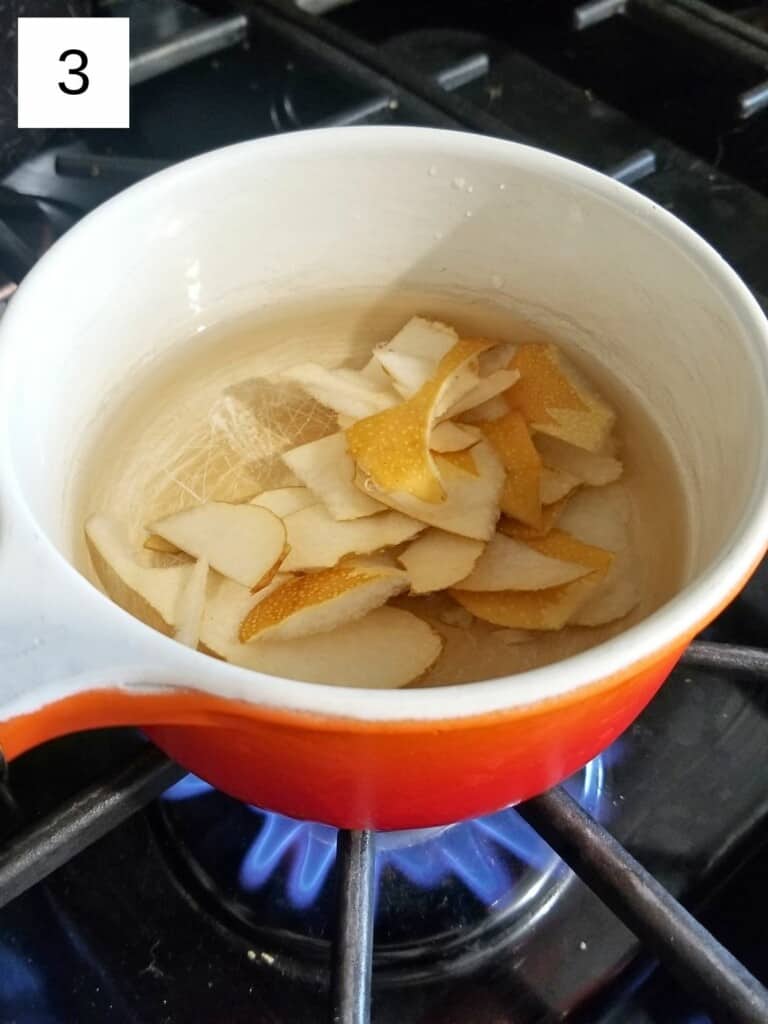
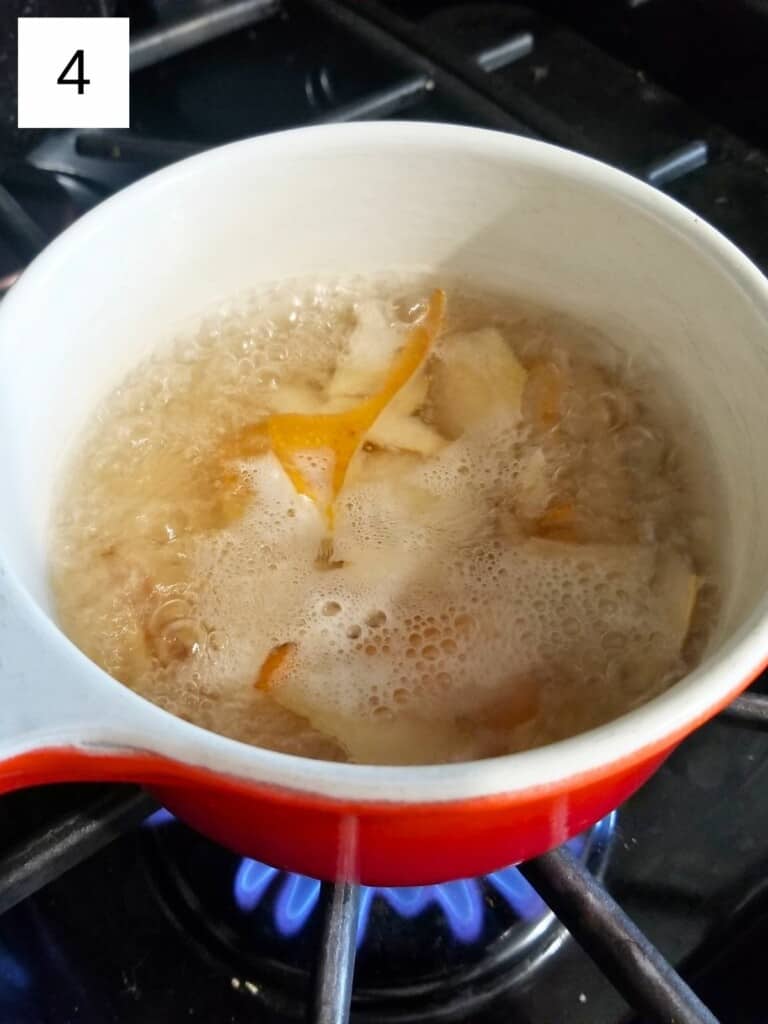
Step 3. Strain through a loose-leaf tea strainer (or coffee filter if you're particular about getting out all the ground ginger bits), and then stir in the honey and enjoy!
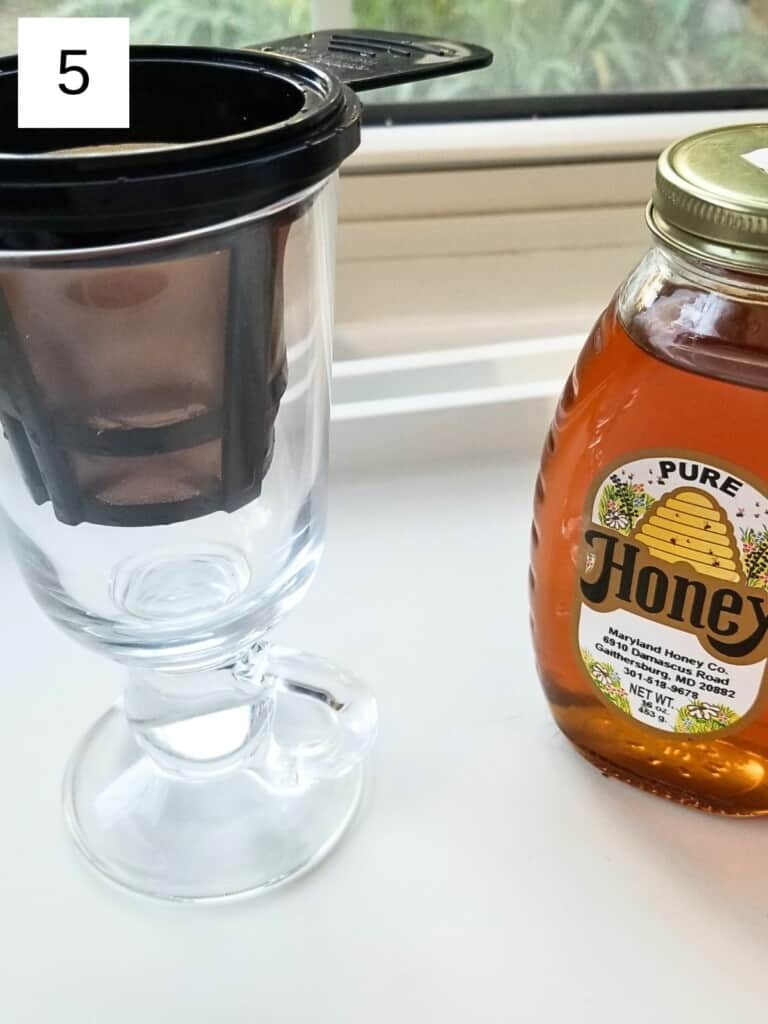
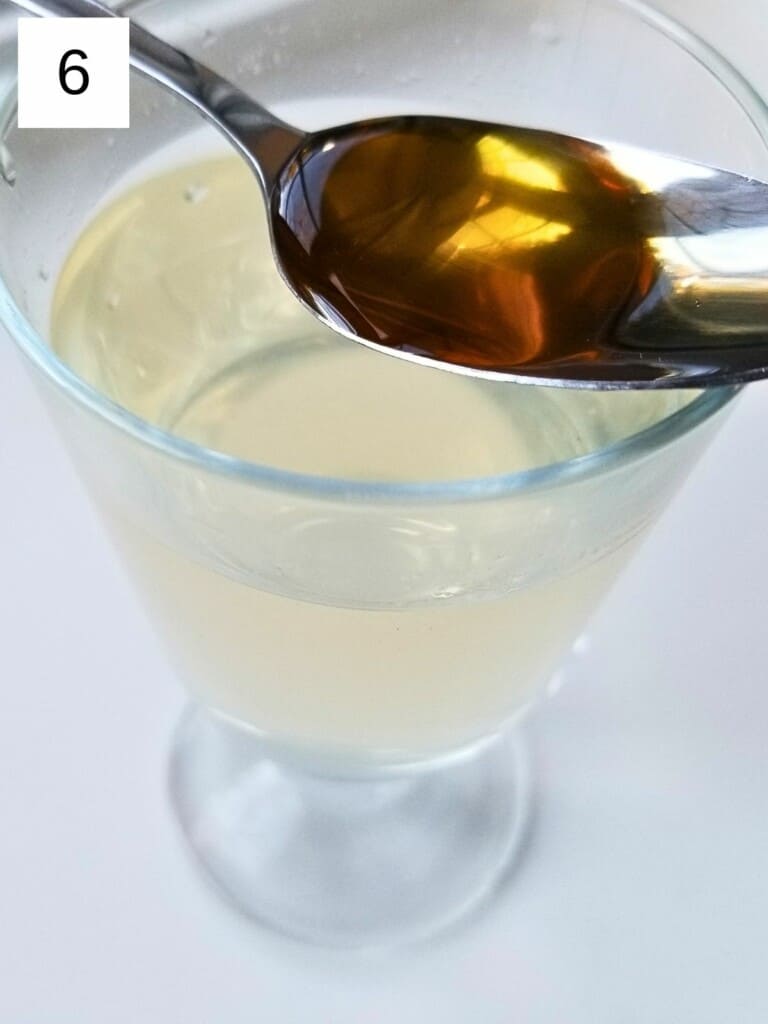
Recipe notes & tips
Ginger: I recommend using ~¼' of ginger root or less (⅛ teaspoon ginger powder), otherwise it can overwhelm the delicate flavor of the pear.
Honey: you can add more or less sweetener as you'd like, but I recommend starting with a half teaspoon if you're worried about adding too much.
Homemade Asian Pear Tea Recipe Card
As always, if you like the recipe, I really appreciate a review or comment!
📖 Recipe
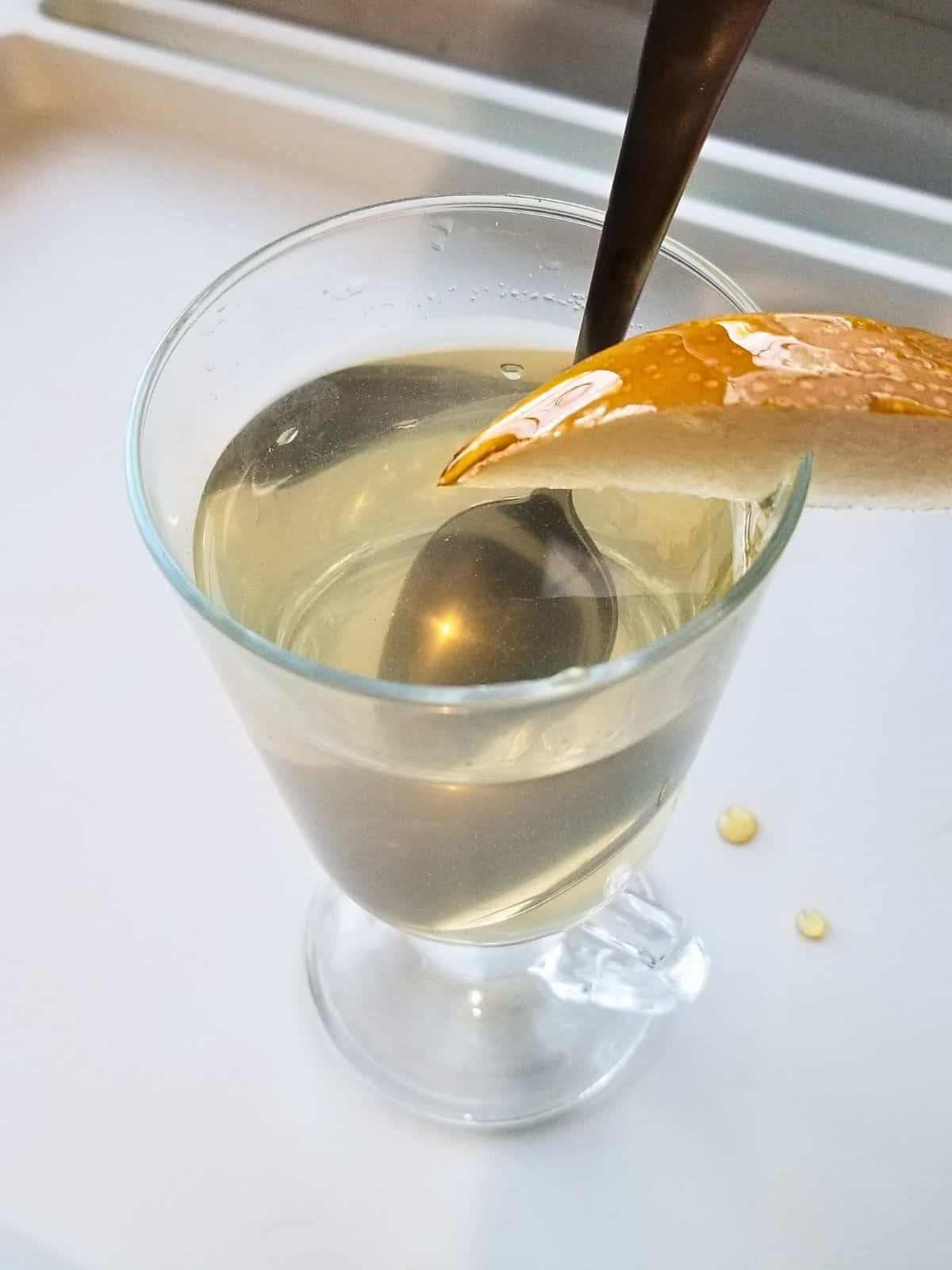
Asian Pear Tea (Ginger & Honey Optional)
Ingredients
- peels of ½ ripe Asian pear
- 1 cup water
Instructions
- Carefully wash your Asian pear; for tea you’ll be using the peels, so it’s especially important that it’s clean. Then cut the pear in half and into slices, if needed, and then peel half the pear (or both halves for 2 servings).
- Put the peels and just over one cup of water into your pot, and then turn on medium heat (or just medium-low, if using a large burner and a small pot). Heat the peels for about 5-7 minutes, lowering the heat if you start to notice it boiling rather than simmering.Pro-Tip: This is also when you may want to add a thin slice of fresh ginger or a dash of ginger powder for that little bite of spice.
- Strain through a loose-leaf tea strainer (or coffee filter if you’re particular about getting out all the ground ginger bits), and then stir in the honey and enjoy!
Notes
Nutrition
Save this post for later!













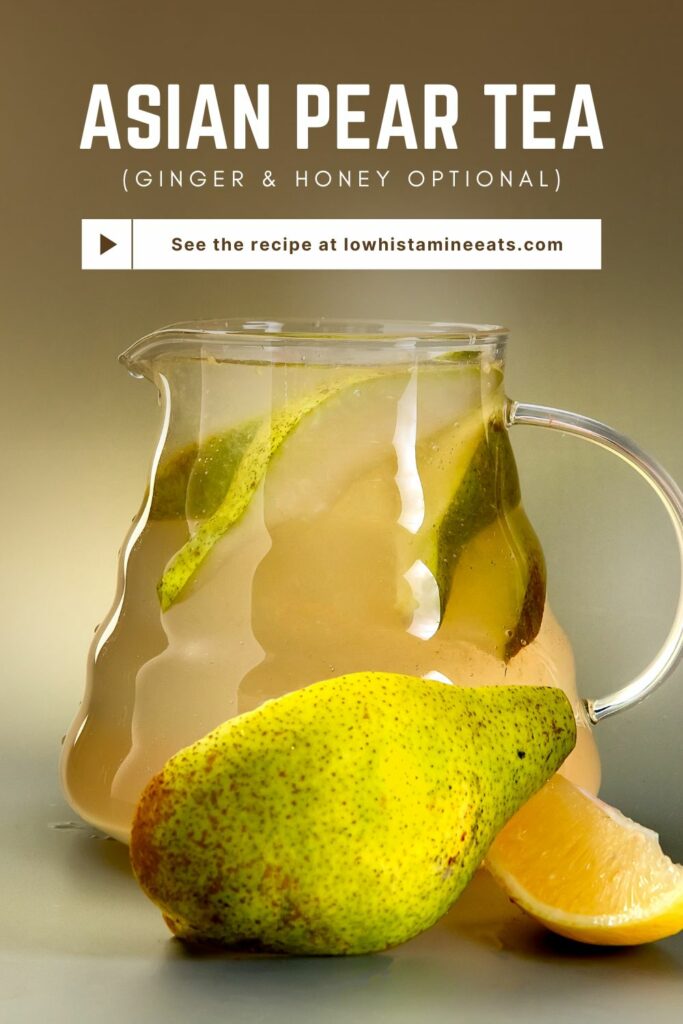
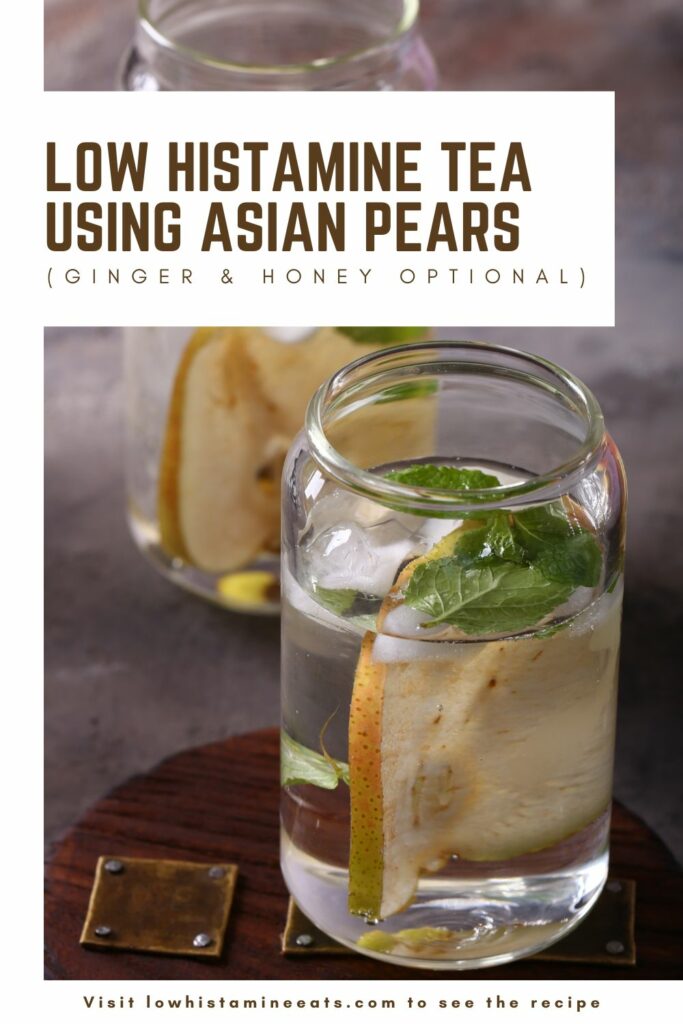

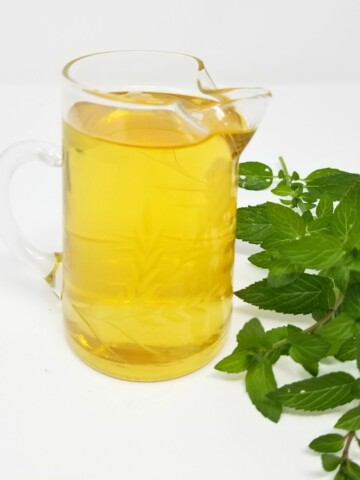

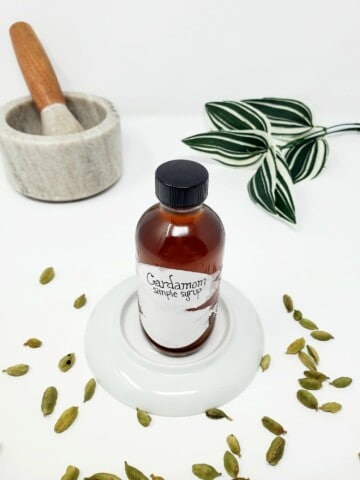
Teryl Barrett says
Hello,
Thanks so much for all the wonderful info!!! PS where do you buy Asian pears? Never heard of them before. I live in MI.
Max says
It's my pleasure, Teryl! I get my Asian pears from the H-Mart near me, and I looked it up & they have a location in Troy, but nowhere else in MI. So other places I've seen them is in International markets, Whole Foods and Amazon Fresh, and often organic markets during the fall and winter. I hope you have find some, because they're absolutely delicious— very crisp!